Estimated reading time 9 minutes, 29 seconds.
In the town of Nanton, Alta., on the weekend of Aug 18 and 19, the Bomber Command Museum of Canada (BCMC) marked the 75th anniversary of the formation of No. 6 Royal Canadian Air Force (RCAF) Bomber Group, established in 1942 during the Second World War.

Flying Wellington, Halifax and Lancaster bombers, No. 6 Group flew 39,584 operational sorties and suffered the lowest loss rate of all bomber groups at two per cent. For more info about 6 Group, click here.
Known also as the Canadian Bomber Group, operating from Yorkshire, England, and starting with twin-engine Wellington bombers, 6 Group grew to 14 heavy bomber squadrons flying four-engine Halifax and Lancaster aircraft.
In the first presentation of the formal program, museum secretary Karl Kjarsgaard spoke of the great contribution of Canadians in the attacks of 2,000 bombers on Duisburg in 1944, when 501 RCAF bombers contributed to the effort.
The “Salute to 6 Group RCAF” began on the Friday evening with a meet and greet social event that concluded with a spectacular night run-up of the museum’s Lancaster bomber.
Saturday presentations included speakers, tributes, live music and all displays on view, including the restoration of a Mosquito fighter bomber through the efforts of the Calgary Mosquito Society. Also under restoration at the museum are an Avro Anson and a Cessna Crane.
Saturday morning and afternoon engine run-ups were done of the Lancaster, a Fleet Fawn trainer, and a Bristol Hercules engine, the type used on Halifax bombers.
The annual August weekend special event is one of the biggest of the year for the museum, which has over a dozen special events from April to November. Click here for more information.

Nanton Lancaster Society president Rob Pedersen is seen with a new display panel of squadron crests of RCAF No. 6 Bomber Command Group, including the No. 6 Group crest. Pedersen served as announcer and chairman for the program events. In the background is the museum’s restored Bristol Blenheim twin-engine bomber.

Dan Fox, vice-president of the Nanton Lancaster Society, spoke about the Fraser-Nash rear gun turret of a Lancaster and the risks of men who operated it. At right is reenactor Matt Heinz, who entered the fuselage section on display to demonstrate gun operation.

During operation of the rear gun turret on a section of Lancaster fuselage, not only does the turret turn, but the four guns pivot up and down. Installation in the gun muzzles of LCD lights synchronized with sound effects makes for a convincing demonstration when the guns are fired.

This year’s big August weekend celebrations featured performances by the RCAF Brass Band Quintet from the Cold Lake, Alta., base. From left to right are: Amanda Carter (French horn), Todd Farrell (trumpet), Doug Sirant (tuba), bandmaster Jeremy Duggleby (trombone) and Zennon Szabo (trumpet).

Two new display panels provided details of RCAF squadrons in No. 6 Bomber Group and illustrated Wellington Z1604, the first aircraft to take off as part of an RCAF 6 Group operation.
Three RCAF veterans from Vernon, B.C. were in attendance at Nanton. They included flight engineer Duke Dawe, and engine technician Gordon Redman–both post-war airmen. Also in attendance was wartime navigator F/L Joe Monteyne DFC, 96, who flew in both Operation Hurricane massive bombing raids within 16 hours on Duisburg, Germany, Oct. 14 and 15, 1944.
The Friday night run-up of all four Merlin V-12 engines of the museum’s Lancaster, FM159, is a spectacle worth seeing. Always on hand for such events is the “crash crew,” which is made up of members of the Nanton Volunteer Fire Department.
The aircraft is named for Lancaster pilot S/L Ian Bazalgette, killed in action and the only Albertan to receive the Victoria Cross in the Second World War.
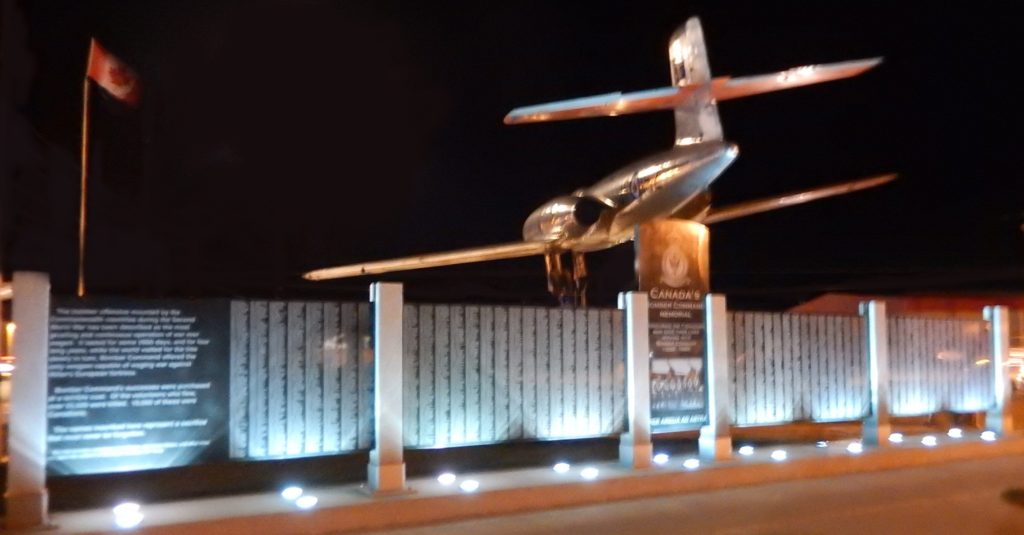
Naming over 10,600 Canadians lost during the Second World War while serving with Bomber Command, the memorial at the museum is illuminated at night.
Additional names which had been previously unknown were unveiled at weekend ceremonies. An RCAF CF-100 Canuck is mounted next to the memorial.

Maj Bill March, historian for RCAF Heritage and History, spoke at the Bomber Command Memorial, paying tribute to the RCAF members who flew and fell in the Second World War, and praised the service still given today by the Royal Canadian Air Force.
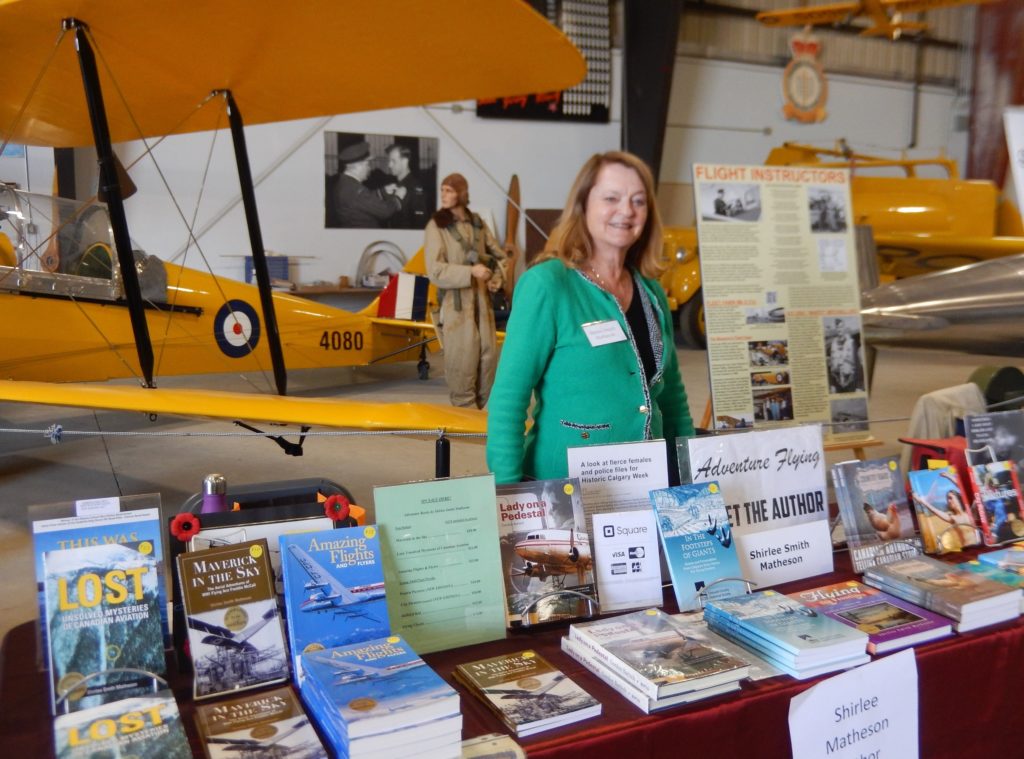
CAHS member and author Shirlee Smith Matheson of Calgary displayed her several books as one of the writers at the commemorative weekend.

Calgary’s Anne Gafiuk, a CAHS member and author, was present with her books published by the Nanton Lancaster Society, including her newest, scheduled for release in November.

Wartime navigator, F/L Joe Monteyne, laid a wreath at Canada’s Bomber Command Memorial in memory of RCAF air crew lost during the Second World War.

Honorary Colonel Paul Storwick brought greetings for the crowd in attendance from 4 Wing Cold Lake.

Retired LCol and author David Bashow was the featured speaker on the Saturday afternoon program. He spoke about the development of RCAF 6 Bomber Group and its great contribution to victory in the Second World War. Bashow serves as editor-in-chief for the Canadian Military Journal, published by the Canadian Forces and the Department of National Defence.
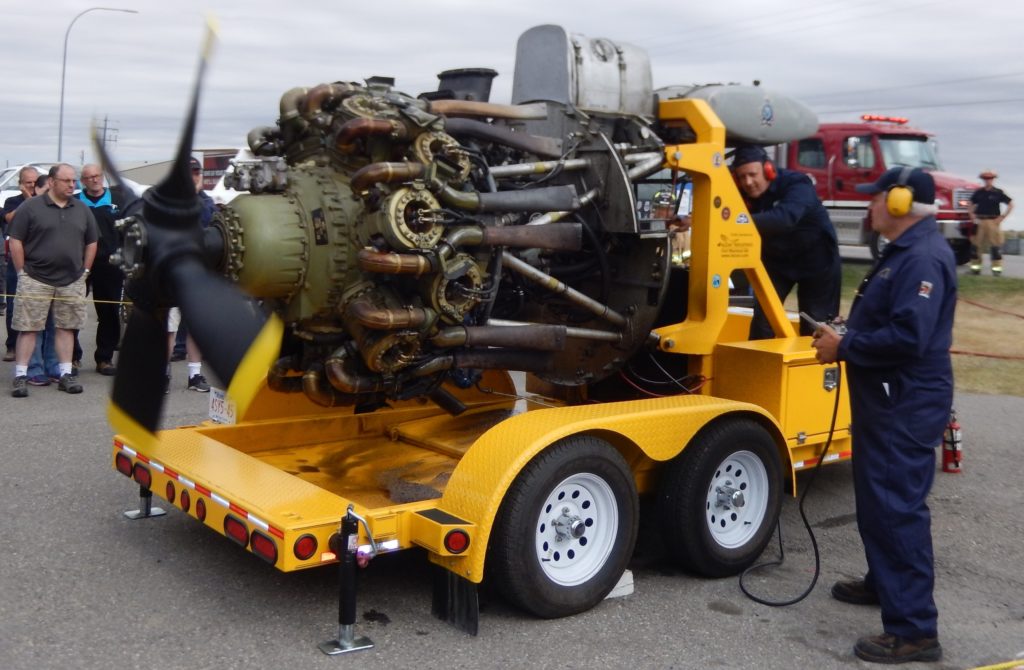
The loud and powerful Halifax bomber Hercules 14-cylinder radial engine with its shortened propeller impresses the onlookers. At rear of the engine is BCMC director Derek Squire, a member of the engine crew. At right is Karl Kjarsgaard, who is heading up efforts to recover a Halifax from Swedish waters to be restored at the Museum. Click here for more information.
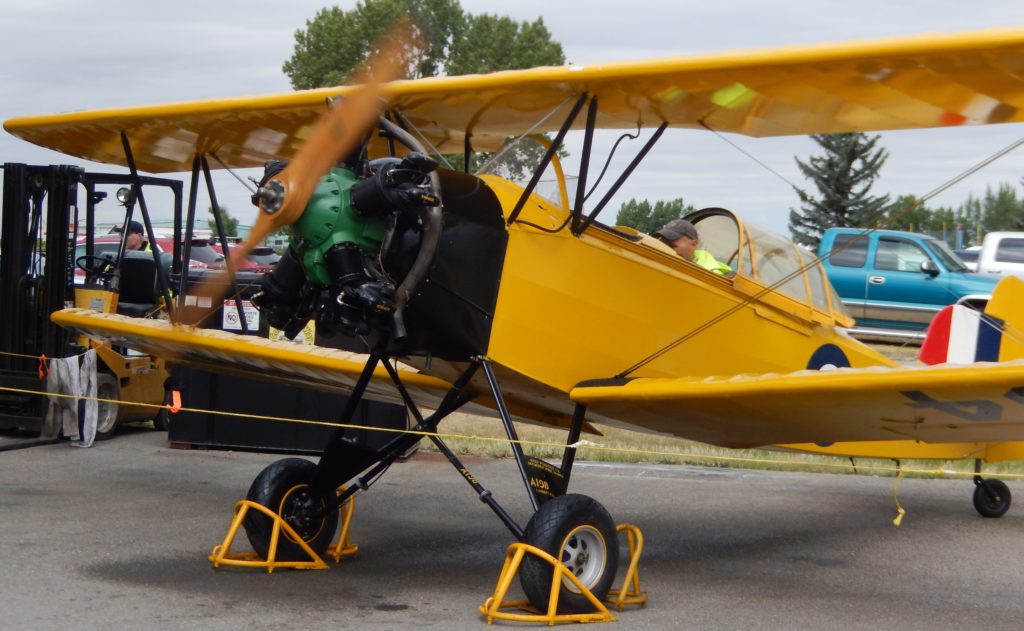
Seated in the cockpit of the museum’s airworthy Fleet Faun biplane trainer is BCMC director Charles Logie during the run of the aircraft’s five cylinder radial engine.
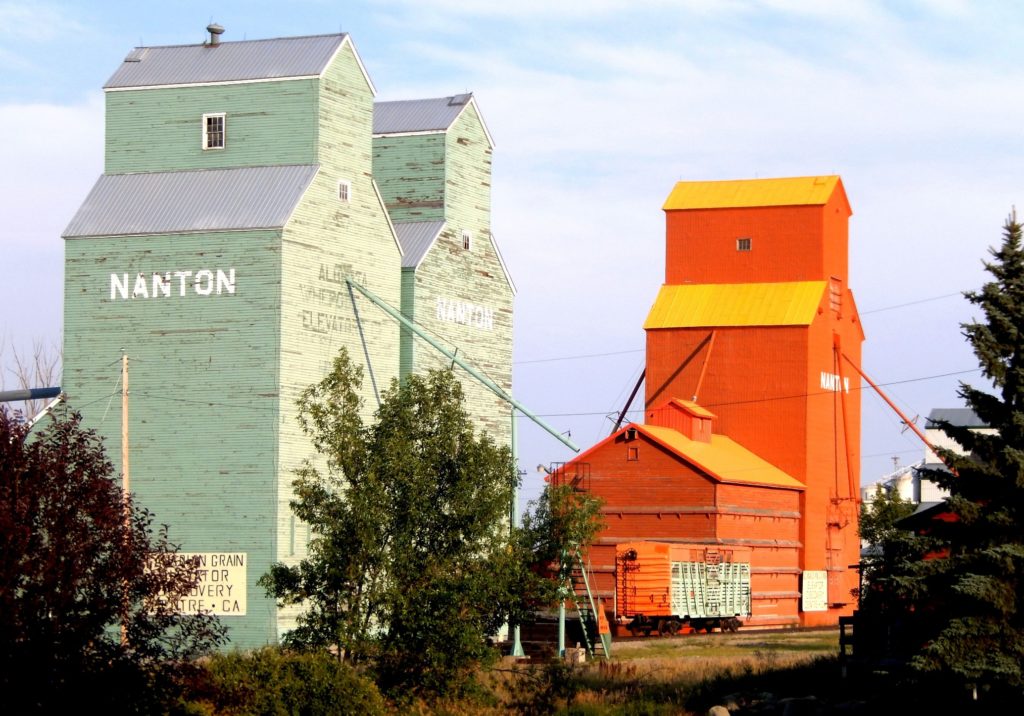
Nanton, Alta., does much more than preserve and celebrate aviation history at the Bomber Command Museum of Canada. It is known also for its antique stores and is one of the few towns left on the prairies that has kept and preserved its grain elevators. The big orange elevator is also the Canadian Grain Elevator Discovery Centre, a popular site for visitors during its annual Nanton Celebrates History day.
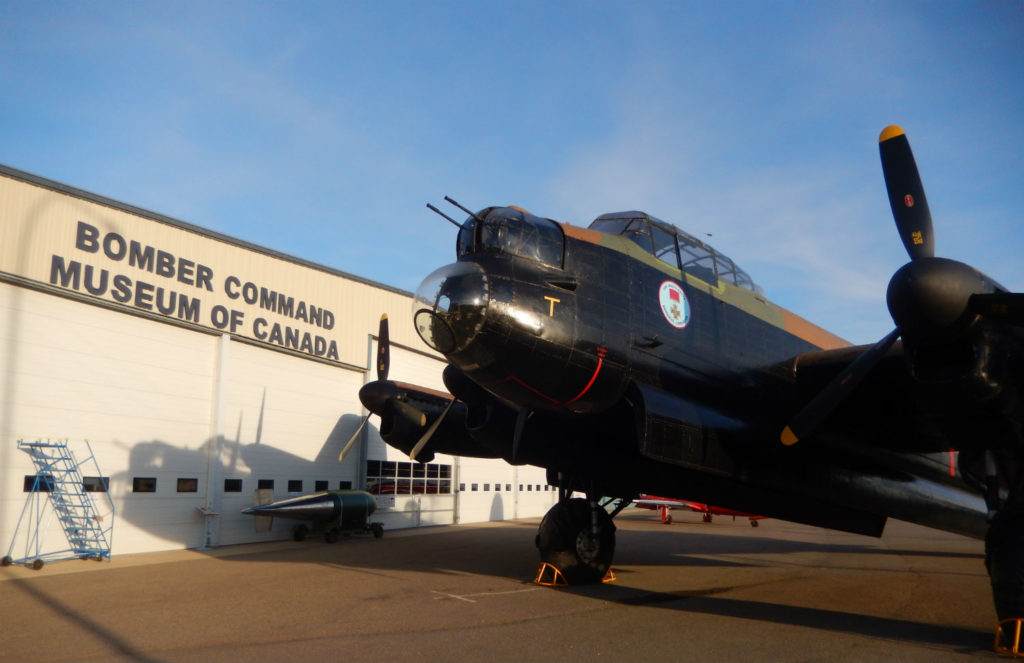
The Nanton Lancaster on display at the Bomber Command Museum of Canada. With the museum located right beside Highway 2 which runs through Nanton, passing traffic sees the bomber when outside its home.









My Father was in RCAF Group 6, based at Wombleton, but I don’t know what squadron. Is there any way that I
could find out? His name was John Oscar Pinder , born March 25 1916
is there